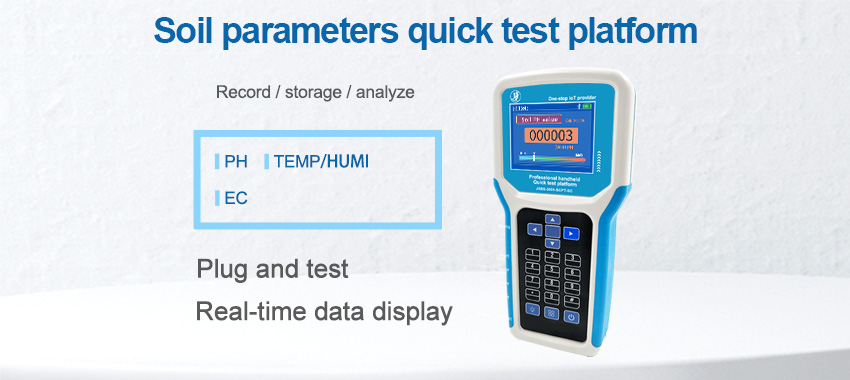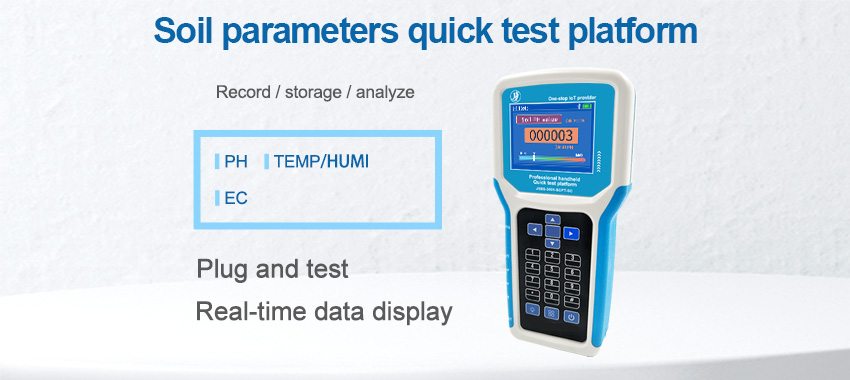In recent years, the agriculture industry has witnessed a significant transformation with the advent of advanced technologies. One such technology that is revolutionizing agricultural practices is the utilization of soil sensors. These sensors provide valuable data-driven insights that empower farmers and agronomists to make informed decisions about their crops, leading to enhanced productivity, sustainability, and resource management. In this article, we will explore how soil sensors are being utilized in agriculture and the benefits they bring to the industry.
Understanding Soil Sensors:
Soil sensors are electronic devices designed to measure various parameters in the soil, including moisture levels, temperature, pH, nutrient content, and salinity. These sensors are typically placed at different depths within the soil profile to provide comprehensive data about the soil's condition. By capturing real-time information, soil sensors enable farmers to monitor and manage their crops more effectively.

Moisture Monitoring for Irrigation Optimization:
One of the crucial functions of soil sensors is monitoring soil moisture levels. By measuring the amount of moisture available in the soil, farmers can optimize irrigation practices. Under or overwatering can have detrimental effects on crop health and yield. Soil sensors help farmers determine the precise amount of water required by their plants, enabling them to implement targeted irrigation strategies. This not only conserves water but also minimizes the risk of nutrient leaching and root diseases, resulting in improved crop quality and yield.
Optimizing Nutrient Management:
Efficient nutrient management is key to maximizing crop production while minimizing environmental impact. Soil sensors play a vital role in this aspect by providing accurate data on nutrient levels in the soil. With this information, farmers can tailor their fertilizer applications according to the specific needs of their crops. By avoiding over or under-fertilization, farmers can reduce nutrient runoff, leaching, and pollution, promoting a healthier environment. Additionally, optimizing nutrient management through soil sensors improves nutrient uptake by plants, leading to healthier crops and increased yield.
Monitoring Soil pH and Salinity:
Soil pH and salinity levels significantly influence plant growth and nutrient availability. Regular monitoring of these parameters is essential for maintaining optimal soil conditions. Soil sensors allow farmers to measure pH and salinity accurately, providing insights into the suitability of soil for specific crops. By identifying soil acidity or alkalinity issues and high salt content, farmers can take corrective measures such as soil amendments or irrigation management to create a favorable growing environment. This proactive approach ensures that crops receive the necessary nutrients for optimal growth and mitigates the risk of yield loss due to adverse soil conditions.
Assessing Soil Temperature:
Soil temperature plays a critical role in seed germination, root development, and overall plant growth. Soil sensors provide real-time data on soil temperature, enabling farmers to make informed decisions about planting schedules and crop varieties. By monitoring soil temperature, farmers can determine the ideal time to sow seeds, ensuring optimal germination rates. Furthermore, they can select crop varieties that are better adapted to specific temperature ranges, improving overall crop performance.

Integration with Precision Agriculture Technologies:
Soil sensors are an integral part of precision agriculture, which aims to optimize resource utilization and increase productivity through data-driven decision-making. These sensors can be integrated with other advanced technologies such as Geographic Information System (GIS), Global Positioning System (GPS), and remote sensing, creating a comprehensive system for precision farming. The integration allows farmers to precisely map soil variations across their fields, identify areas with specific soil conditions, and implement site-specific management practices. By tailoring their actions to match the specific needs of each soil zone, farmers can maximize yields, minimize input wastage, and reduce environmental impact.
Data Analysis and Insights:
The data collected by soil sensors is valuable only when it is properly analyzed and transformed into actionable insights. Farmers can leverage agricultural software and data analytics tools to process the vast amount of information gathered by soil sensors. By analyzing historical and real-time data, farmers can identify patterns, predict trends, and make data-driven decisions. For example, farmers may observe correlations between soil moisture levels and crop yield, helping them optimize irrigation schedules for maximum productivity. Moreover, integration with weather data enables farmers to better understand the interplay between soil conditions and weather pa







